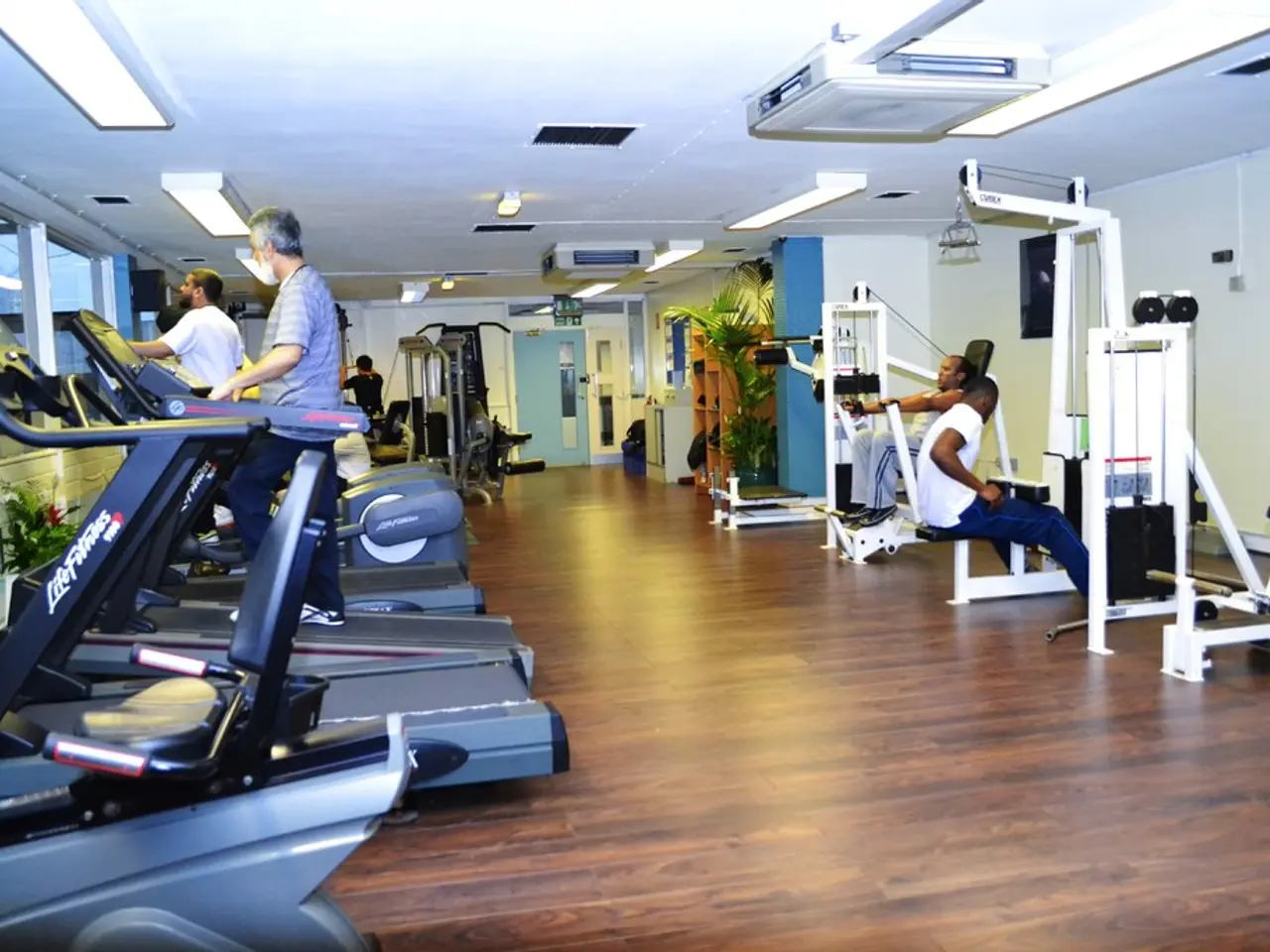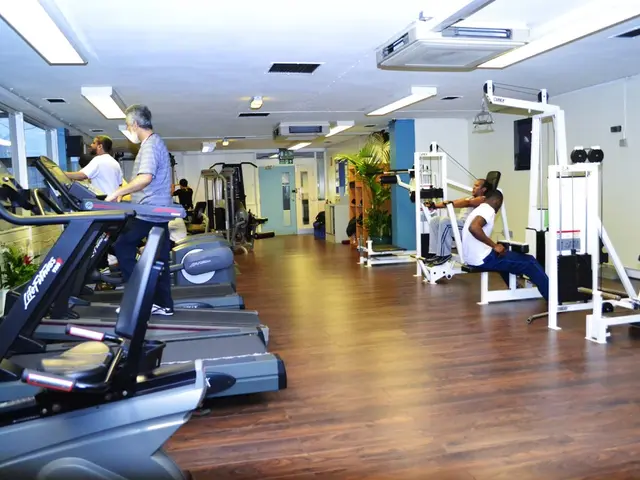Unveiling the Key Strategies for Crafting a Comprehensive Fitness Regimen
Finding a fitness routine that feels sustainable and aligns with your goals is essential for long-term success. A well-balanced fitness routine includes strength training, cardiovascular endurance, flexibility, and recovery.
Strength Training
Incorporate strength training exercises that cover both upper and lower body muscles using compound movements like squats, rows, and push-ups 2-3 times per week. This will help build overall muscle strength and support functional movement. Strength training enhances muscle mass, improves bone density, and boosts metabolism.
Cardiovascular Endurance
Include cardiovascular endurance activities like low-impact cardio (cycling, rowing, elliptical) 2-3 times a week for 20–30 minutes to enhance aerobic capacity. Cardiovascular exercise is crucial for improving heart health, burning calories, and increasing stamina.
Flexibility and Mobility
Regular flexibility and mobility exercises such as dynamic stretching, yoga, or mobility drills should be done regularly to maintain joint range of motion and muscle elasticity. Flexibility ensures that muscles and joints can move through their full range of motion, reducing the risk of injury.
Recovery
Scheduled rest days, ensuring quality sleep, and including lighter active recovery sessions with gentle stretching or low-intensity activity are vital in a balanced fitness routine. Recovery is necessary to repair muscles, prevent overtraining, and maintain long-term fitness progress.
Progressive Overload and Periodic Routine Updates
Plan your workouts with appropriate sets, reps, and rest intervals based on your goals. Progressive overload is essential, gradually increasing weight or intensity to keep making gains without plateauing. To ensure long-term success, update your routine every 6-8 weeks by introducing new exercises or variations while maintaining balance between training types.
Warm-ups, Cool-downs, and Tracking Progress
Warm-ups and cool-downs in every session help prevent injury and prepare the body. Adequate warm-ups, cool-downs, and tracking progress are essential for maintaining motivation and safety.
In summary, an effective balanced fitness routine includes:
- Strength training 2-3 times weekly with compound exercises targeting all major muscle groups
- Cardiovascular workouts 2-3 times weekly for endurance
- Regular flexibility and mobility exercises
- Scheduled recovery and rest to prevent burnout and injury
- Progressive overload and periodic routine updates
- Adequate warm-ups, cool-downs, and tracking progress to maintain motivation and safety.
Building a balanced fitness routine doesn't have to be complicated. The secret lies in the variety of focusing on different aspects of fitness throughout the week and adjusting as needed. Consistency, gradual challenge, and well-rounded workout components form the foundation for sustainable fitness.
- For long-term success, a fitness routine needs to be sustainable and aligned with personal goals.
- A well-balanced fitness routine should include strength training, cardiovascular endurance, flexibility, and recovery.
- Incorporate strength training exercises that cover both upper and lower body muscles with compound movements like squats, rows, and push-ups three times a week.
- Cardiovascular exercise is crucial for improving heart health, burning calories, and increasing stamina; include activities like low-impact cardio such as cycling, rowing, or using an elliptical 2-3 times a week for 20–30 minutes.
- Maintain joint range of motion and muscle elasticity by doing regular flexibility and mobility exercises such as dynamic stretching, yoga, or mobility drills.
- Recovery is essential to repair muscles, prevent overtraining, and maintain long-term fitness progress; schedule rest days, ensure quality sleep, and include lighter active recovery sessions.
- Progressive overload is necessary to keep making gains without plateauing; plan workouts with appropriate sets, reps, and rest intervals based on your fitness goals.
- Update your fitness routine every 6-8 weeks by introducing new exercises or variations while maintaining balance between training types.
- In every session, proper warm-ups and cool-downs help prevent injury and prepare the body, and tracking progress is essential for maintaining motivation and safety.
- Balancing cardio, strength training, flexibility, mobility, recovery, and scheduling sessions within the scope of health-and-wellness and fitness-and-exercise science principles forms the foundation for sustainable fitness.




